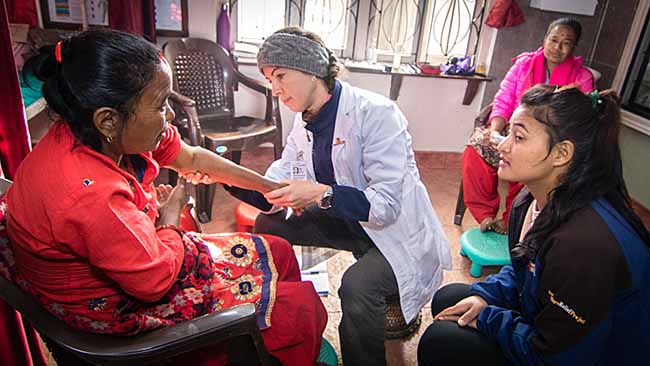
When we open the clinic doors at 8:30, there are usually already a handful of patients waiting outside in the crisp morning air. Patients arrive throughout the day. There are no fixed appointment times. Locals are encouraged to come in the afternoon so that patients who have to travel further can come in the morning and have time to get home before dark. If its busy, they may wait up to a few hours. The Nepali interpreters call out the names of patients and show them in. You never know what story or problem is going to present itself that day. At this point in the camp, the majority of patients are returning and on a treatment plan, but new patients filter in each day. The following is just a brief peek of the people I have the pleasure of treating on any given day.
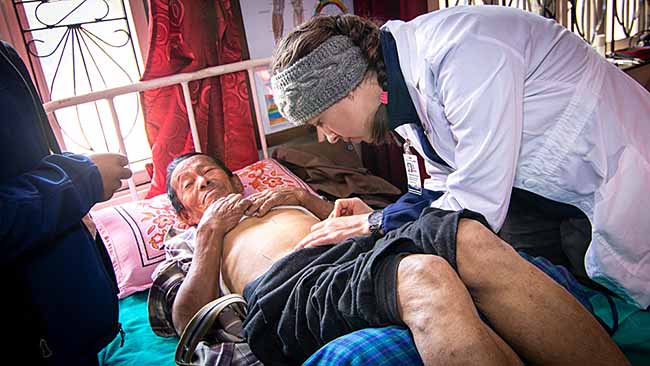
My first patient of the day is U, who comes 2-3 times a week. She has pain in her elbow and forearm due to a fracture years ago. It was never properly reset and didn’t heal right. She experiences constant pain and an inability to fully flex or extend her arm. There is spongy depression where part of her ulna should be and her elbow is knobby and stiff due to calcification. She’s been coming to the clinic for a long time. The long term solution to her pain and inability to move is much more than what I can offer her, she probably needs to see an orthopedist and get surgery. She insists that the acupuncture helps reduce the pain and has allowed her more range of motion. I’m just not sure how much more progress we’ll realistically make, though continue on anyway trying to keep her below a certain threshold of pain. I remind myself she’s been living with this for over 20 years and still manages to work as a farmer.
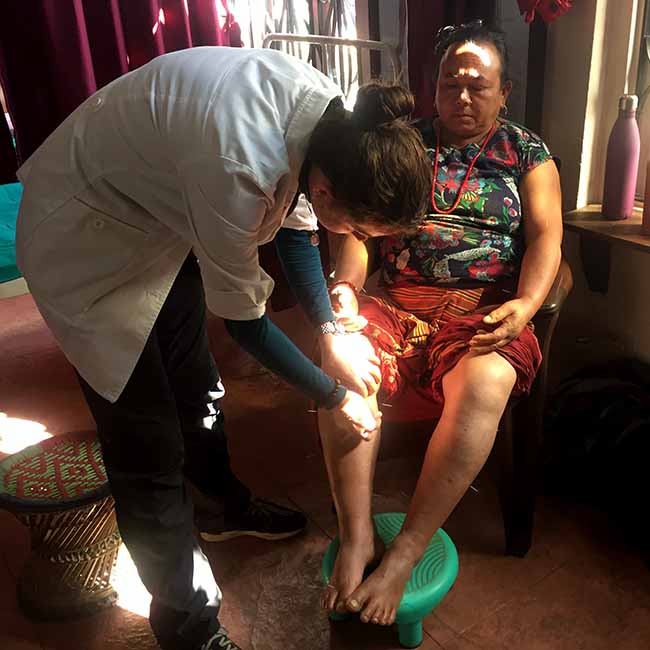
Today we get our usual busload of ladies from Chitlan, another village an hour up the road. They come 2-3 days a week and are a hoot! There are usually 10-15 of them. This Friday they inform us that since they are only 7, they convinced an ambulance driver to drop them off so that they wouldn’t have to wait for the bus and could come earlier. Myself and the other clinicians wonder how they pulled this off. These ladies are clearly bosses.
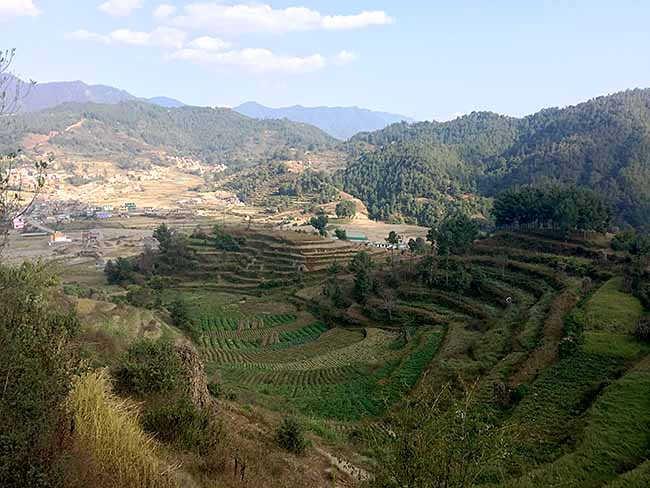
One of these women, L. is in her 60’s and injured her knee in a fall years ago. Her patella won’t move at all and her knee pain causes her to limp, though she’s been limping less since starting treatment. I often use warm-needle moxa with her, which involves lighting a cone of mugwort at the end of the needle. She jokes that she’s burning and her pyre is lit, even though she is still alive. In Nepal, the dead are traditionally burned in a pyre on a river bank. All the other Chitlan ladies, who are sitting nearby with their needles in, laugh hysterically. I try to help another women, in her 70’s who also has knee pain, up from the chair after her treatment. She jokingly keeps squatting and hunching over as she walks out of the clinic, eliciting another round of laughs.
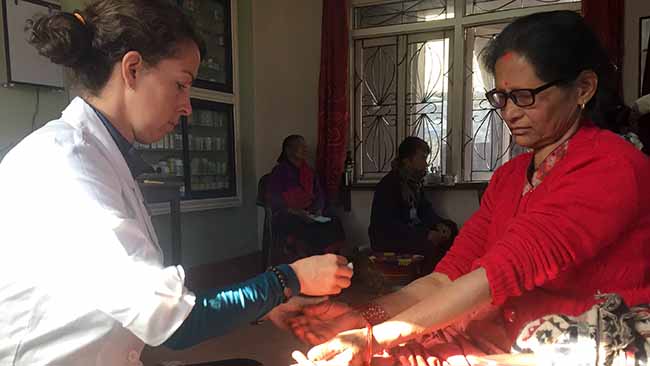
Most of the Chitlan ladies are older, but S. is only in her late 20’s. She gets low back pain from muscle strain due to working bent over in the fields all the time and carrying heavy baskets of produce on her back. Despite her aches and pains, she is always cheerful. In addition to offering acupuncture, I teach her some stretches that she does enthusiastically and with lots of giggling.
Another woman, K. comes to the clinic from another town a couple hours away with her friends. She came seeking treatment for her knee pain, but when I take her vitals and do a review of systems, I find that she has much bigger problems. Her blood pressure is 180/110. She says that she has a history of having blood pressure over 200 systolic (read: major hypertension!). At least once a week, she gets dizziness that lasts 3-4 days and ends with an episode of vomiting. She is nauseous all the time and has frequent migraines. High blood pressure can either cause or aggravate many of these symptoms. I ask her if she’s on any medications, “No, I manage it with my diet. I’ve been told I need meds before, but I don’t want them.” I explain that what she is experiencing is unmanaged hypertension and that she really should consider medication as a possibility. She is resistant. I give her herbs that can be helpful in reducing blood pressure, do acupuncture to treat some of her symptoms and then write her a referral letter to the small regional hospital in Palung, a couple hours away. I never thought I would be a drug pusher, but I worry she could be a ticking time bomb for a stroke. Many studies have shown acupuncture and herbs to be effective in quickly lowering systolic blood pressure, but diastolic is more stubborn. I don’t want to risk the time in her case. I encourage her to come three days a week to continue to monitor her blood pressure and try to work on her symptoms, though its difficult since she lives far away.

My last patient on Friday was new, an old man in his early 70’s. N. begins by describing his leg pain then suddenly starts explaining how he keeps getting a weird movement in his stomach and then can’t breath. After some dancing around with my interpreter, I finally figure out that he’s referring to his abdominal aortic pulse. I take his vitals and they aren’t good. His respiratory rate and pulse rate are extremely high, his oxygen saturation is extremely low. He’s basically suffocating before my very eyes. The “movement” in his belly he is experiencing is the flutter of his heart rate increasing to try to distribute what little oxygen he’s inhaling to the cells of his body. I listen to his lungs and review his medications: a steroid inhaler, a diuretic, and a bronchi-dilator. It doesn’t take much to infer that he has advanced COPD and probably emphysema, a very common condition in this part of the world.
There is very little I’m equipped to do for this man. The nearest hospital is a couple hours away and the health post next door is closed, all the health care workers are gone for the day. There are no doctors in this village and medications are limited. Only short-acting bronchodilators are available in Bhajra and any stronger medications or procedures that could help him breath are only available at the regional hospital in Palung. They are also closed for the day, but could possibly open for an emergency. Even then, there may not be a doctor available. At the very least, he needs oxygen asap. With the help of the Nepali ARP staff, we are able to arrange access to the health post to use their oxygen machine.
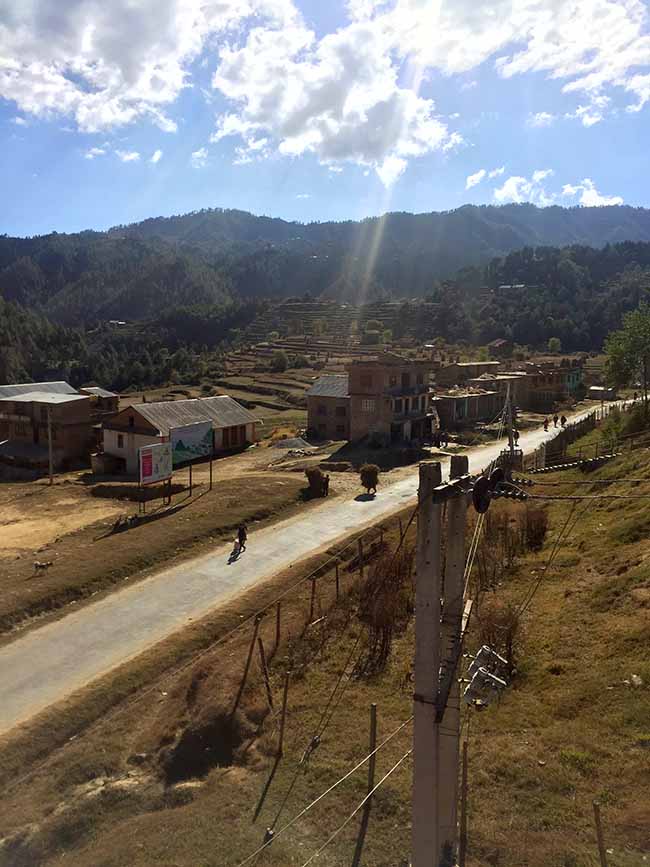
When N. bends over to put his shoes one, he becomes severely out of breath and then has to stop three times as we walk the 15 meters up a small hill to the health post next door. Someone I don’t recognize unlocks the door, turns on the oxygen machine and disappears. After an hour of breathing pure O2, his vitals stabilize a bit. His grandson comes to pick N. up and take him home on his motor-bike. I press them to go to Palung as soon as possible.
(Follow up: N. came in two more times, his condition continuing to deteriorate. Finally on Monday, we were able to convince the family to send him to the hospital a couple hours away. His grandson called an ambulance that picked him up from the health post where we had taken him for more oxygen).
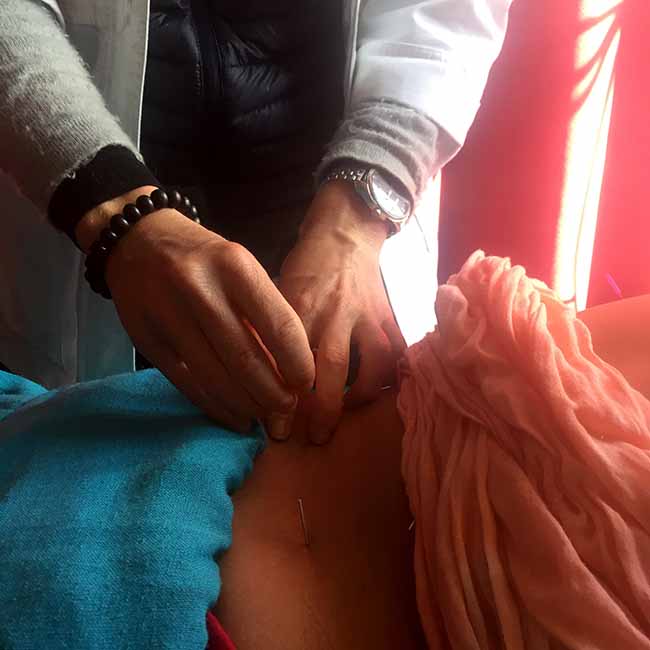
As with anything, some days are more challenging than others. Each day in the clinic I feel more and more grateful to be here and to have this medicine as a tool. It’s a pleasure and an honor to get to bear witness to the stories that unfold and the progress that’s made. I can only hope that each patient who passes through my little corner of the clinic gets the best that I have to offer. -- Sugandhi Jordan











